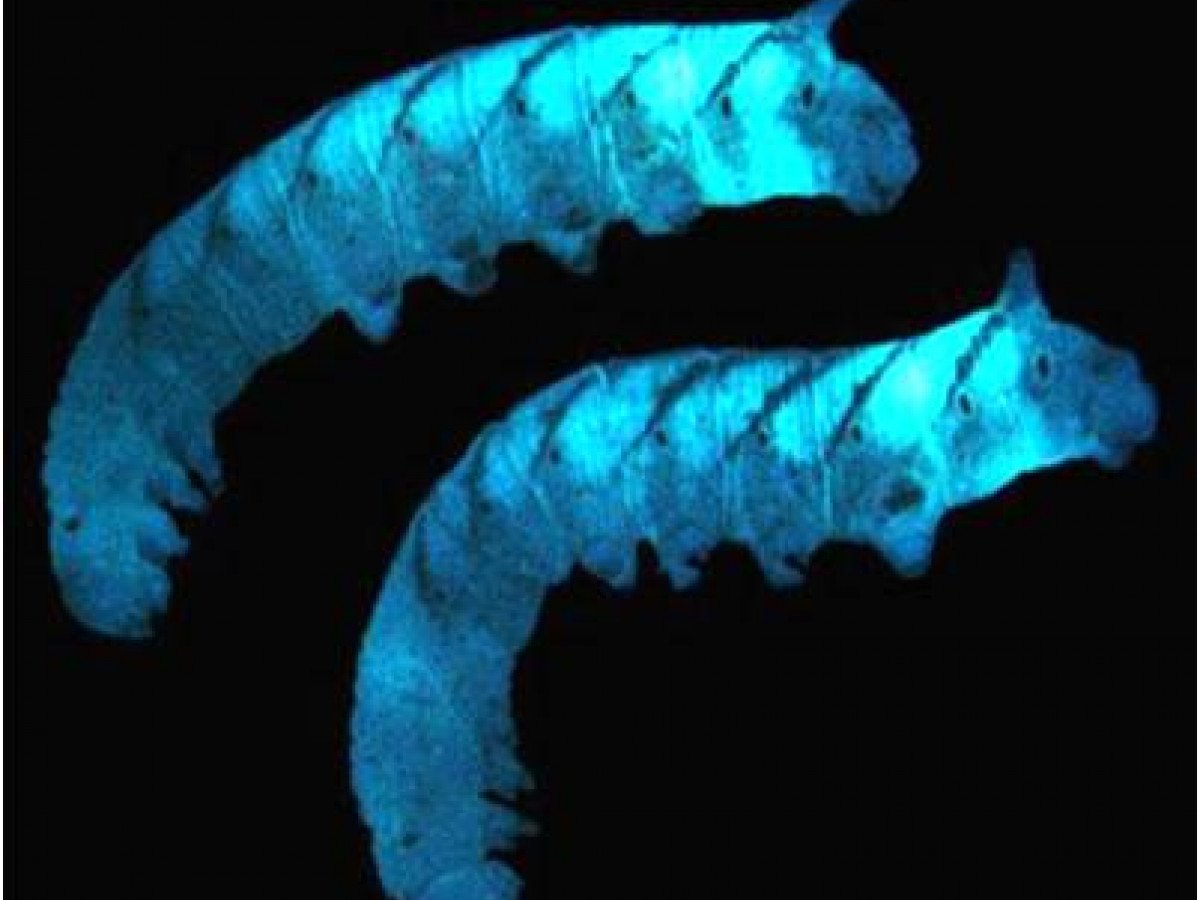
| Quote: |
| PASSENGERS on board cruise liners are sometimes startled by an eerie phosphorescent glow emitted by seawater flush lavatories. The explanation lies in
luminous bacteria, which require oxygen for their light-generating reactions. Luminescent bacteria are present in all marine environments and develop
abundantly on the surface of decaying fish. Their presence can be a problem — most of the research on marine bioluminescence has been funded by the US Navy, embarrassed by glowing trails behind surface vessels, and more recently by bacterial interference with the laser light used for submarine communications. |
Upon searching some more:
The bacterium causing luminescence is Vibrio (Photobacterium) phosphoreum, it thrives between 20 and 30 deg C, and grows well at saline conditions. The bacterium requires oxygen to produce light, and the reaction roughly works as a luciferase (enzyme) - FADH2 (flavo-cofactor) complex, where light is emitted once it reacts with O2 and RCH2OH to form RCOOH and H2O. Light is emitted in the bluish green range (460–490 nm).
THen, at http://www.disknet.com/indiana_biolab/b203.htm it says:
It grows on glucose, mannose, fructose, or glycerol as a sole carbon source, and synthetic or real seawater as a growth medium.
ISOLATION :
Incubate fresh fish, squid, or octopus at 10-15 deg Celcius, half submerged in natural or synthetic seawater (I take it this shouldn't be sterile seawater! This will stink, so do it outside!). Examine at half-day or daily intervals for glowing colonies of bacteria (in total darkness after your eyes are dark adapted).
Streak these colonies on LM (Luminescence Medium). LM is synthetic or natural seawater containing per liter: 3 ml glycerol (glycerine), 5 gram yeast extract, 5 g tryptone, 1 g CaCO3 (powdered limestone or chalk) and 10 g of agar (per litre). For streaking, sterile toothpics can be used (i.e. soak them in ethanol and dry over flame, and use immediately after they cooled down)
I looked up agar, and it is a linear complex sugar made from beta-galactopyranose linked to 3,6-anhydro-L-galactopyranose. Basically, its just a polysaccharide/carbohydrate, or complex sugar. I should think any other complex sugar would do, such as starch, alginate (a linear complex sugar made from beta-D-mannuronic acid and alpha-L-guloronic acid) etc.
Regarding tryptone, this is a pancreatic digest of casein, a protein. I should think any protein extract should do, you will get that in Health shops/Fitness shops etc.
Yeast extract is similarly easy to get, it is basically a whole cell lysate of yeat, and thus contains vitamins, protein, DNA/RNA, lipids, minerals etc. Isn't Marmite a yeast extract?
Anyway, back to the isolation of Photobacterium phosphoreum!
So, once you have streaked luminous colonies onto the plates, you can either grow them at room temp. or at 4 deg C (fridge). With the latter, check every day for growth by looking at the plates in the dark!
For growth in liquid medium, just leave out the agar (whcih is the gelling agent).
So I would first grow the bacteria on the fish, and meanwhile prepare covered plates with the growth medium. Alternateively, use a small bottle that is sterile (Ethanol-rinsed) and poor in the hot growth medium. Let it cool down, and once at room temperature, add a bit of the luminous colonies from the fish. Only very very little is needed! Even if you dont see anything you have picked up on the tooth pick, there still will be zillions of bacteria on it!
Then grow the bacteria for a day or two, take out a small amount and bubble it with air! Luminescence will ensue! Apparently, luminescence can be so bright that you can read a newspaper with it in the dark!
How cool is that!!
Anyway, apparently it is better to use fresh fish from a fish market next shore lines, simply because transport wasn't so long and the fish are fresh. Water from a salt water aquarium gives varying, but usually poor results. If you live inland and happen to be on a seacoast, place a fresh squid in a plastic bag with trapped air and place it in crushed ice for storage for the trip home. For better results place fish or part of a fish in a jar that is pushed into crushed ice in a cooler. The purpose of the jar is to protect any growing colonies from smearing. By the time you get home glowing colonies may be present. After one or two days at 4 to 18C, luminous colonies may be present. Examine the squid or fish daily. Incubation at 15 to 20C may be the best temperature. Or use your home refrigerator which is about 4 C or above.
By the way, Photobacterium phosphoreum is the strongest light emitting bacterium known!
Whoever tries this gets the Mad Biochemist award!

PS An alternative, but similar growth medium is
30 g NaCl
1 g Glycerol
10 g Peptone (Bacto-Peptone)
3 g Beef Extract
(to obtain solid medium you should add 15 g of Bacto-Agar)
Dilute the ingredients in water (pH should be about 7,3)
Fill with H2O up till 1000 ml
PS2 At AEM Publications, I found a paper 'Isolation and Identification of Photobacterium phosphoreum from an Unexpected Niche: Migrating Salmon' by Budsberg et al. they use 0.38 M NaCl, 0.02 M MgCl2 · 6H2O, 0.25 M MgSO4 · 7H2O, 8 mM KCl, 0.5% peptone, 0.3% yeast extract, 0.3% glycerol as a growth medium. The first few are artificial seawater, which by itself is 0.4 M NaCl, 0.1 M MgSO4 · 7H2O, 0.02 M KCl, 0.02 M CaCl2 · 2H2O.
[Edited on 7-2-2004 by chemoleo]


 , such as bleach...so they wont have much bacteria on it.
, such as bleach...so they wont have much bacteria on it. 






